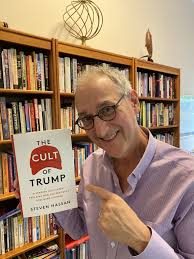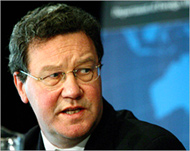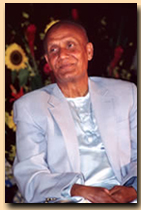CultNews recently received some interesting questions from a reader concerned about President Donald Trump.
The reader said, “I often wonder if my cousins are members of a cult. They worship Donald Trump. He has become a god-like figure in their lives and no matter what Trump does, their feelings do not change.”
The reader then asks, “If this is the case, will they ever change? I cannot talk with them because they see me as some type of liberal demon. It’s uncomfortable to be around them so I just stopped trying to have a relationship. What do cult leaders really want? What do their followers want?”
Analysis by Rick Alan Ross
CultNews response
Donald Trump is not an absolute authoritarian “cult” leader like a Jim Jones, Charles Manson or David Koresh. He was democratically elected and is subject to congressional oversight, judicial review by the courts and must run to be reelected. The President of the United States is also constitutionally limited by law to no more than two terms (eight years) as president. None of this matches the history or narrative of cult leaders like Jones, Manson and Koresh.
Trump supporters do seem to be narrowly focused on frequently partisan news sources, which can affect their critical thinking, but these sources of information fit within the boundaries of propaganda and are not part of the framework of an intentionally planned thought reform program (“brainwashing”) run by Donald Trump.

Donald J. Trump
Trump supporters are not cult victims
Moreover, most Trump supporters already shared and appreciated Donald Trump’s ideas, feelings and attitudes before they voted for him. He didn’t change them deceptively through coercive persuasion without their knowledge and consent. Instead, like a savvy salesman, Donald Trump effectively shaped and marketed himself and his brand in response to the Republican base. He implicitly understood what that political base wanted in a candidate, which is why he won its primary. And his persistently precise perception of the attitude of the majority of Republican voters has repeatedly proven to be correct according to his polling numbers.
Trump supporters are not cult victims. Specifically, people that support Donald Trump are typically not happy about recent changes in the United States. This includes concerns about the shifting demographics of the country, immigration, increasing frustration regarding “globalization” through entities like the UN and various international treaties and agreements, growing discomfort about interdependent world trading markets, rejection of LGBT rights such as gay marriage, fears about the centralization of government and unhappiness about certain women’s rights such as reproductive choice. Many Trump supporters are also upset about questions being raised about gun rights. There is also substantial resentment and suspicion amongst Trump supporters about the influence and power of the “intellectual elite.” And religious leaders that support Donald Trump seem to be deeply troubled by decreasing church attendance and the corresponding decline of religious influence in the United States.
Trump did not need to implant these preexisting attitudes and concerns through “mind control,” which was already there and quite evident within the Republican base. Again, like a good salesman Donald Trump simply effectively marketed himself by tailoring his presidential campaign to concisely capitalize on existing concerns abundantly evident in the Republican base.
In his soon to be released book “It Was All a Lie” author Stuart Stevens interestingly concludes that Donald Trump ultimately represents today’s “Republican party in a purified form.” Stevens, a purported “veteran Republican strategist,” writes, “There is nothing strange or unexpected about Donald Trump. He is the logical conclusion of what the Republican party became over the last 50 or so years.”
Cultural divide
Summarizing the situation, Trump supporters appear to be generally uncomfortable and/or unhappy with recent cultural change in America. And to a large extent there are cultural lines of separation, or a cultural divide, which has become increasingly apparent between urban and rural Americans, as well as between coastal Americans and those that live within the middle of the country.
Apparently, Americans that support Donald Trump feel that he represents meaningful resistance to unwanted change. And Trump supporters think he can reverse certain cultural trends. Trump’s most popular slogans and mantras like “Build the Wall” and “Make America Great Again” seem to reflect this sentiment.
Some cult-like aspects, but not a “destructive cult”
There are aspects of Donald Trump and his supporters that may appear at times to be cult-like, such as Trump’s rather narcissistic seemingly messianic claim made in 2016 that “only [he] can fix this,” or his supporters apparent penchant for cognitive dissonance. CultNews commented about this in 2016. But it’s just too simplistic to dismiss an entire political movement and a democratically elected president as a “destructive cult” without noting the distinct differences that separate Donald Trump from historical cult leaders and his supporters from the victims of destructive cults.
Instead of characterizing devotion to Donald Trump as a “cult” without qualification, it’s preferable, more objective, accurate and concise to recognize the nuances and complexity of the cultural currents and rifts that are polarizing Americans. Donald Trump may have a kind of fan base or “cult following” like many celebrities, but he does not match the criteria that defines cult leaders who have historically exercised virtually limitless unchecked dictatorial power over their followers. Trump is also not empowered by a deliberate “brainwashing” process deceptively done through a premeditated intentionally planned thought reform program with the goal of “mind control.” It serves no useful purpose to reduce the word “cult” to a “buzz word,” rather than recognize its precise range of meaning and boundaries.
Robert Jay Lifton, a psychiatrist well known for his writings about thought reform and cult formation reportedly made the distinction that, “Trump is not totalistic like [Shoko Asahara] the leader of [the Japanese cult] Aum Shinrikyo.”
Deprogramming Trump supporters?
It’s also important to note that true believers cannot be “deprogrammed” regarding their personally held individual beliefs. Simply put, they were not programmed in the first place and therefore cannot be deprogrammed. Such true believers may eventually become disillusioned and move on, but this will be a personal choice, not the result of an intervention.
Historically, cult deprogramming is essentially an educational process, which centers upon the examination and unwinding of a thought reform program deceptively used without informed consent and knowingly maintained by a group or leader that uses coercive persuasion. This does not fit the profile or the circumstances of typical Trump supporters who already agreed with and endorsed Donald Trump’s core beliefs and the proscribed path he promised to implement for the United States.
Politicizing the word “cult” and using it to label Trump supporters serves no useful or constructive purpose. It dismissively demonizes a majority of the Republican party and other voters that support Donald Trump without recognizing their preexisting personal sentiments. This inaccurate labeling also denigrates the suffering of real cult victims.
Michael Langone, a counseling psychologist and the director of the International Cultic Studies Association told a journalist in an interview, “I can understand why people don’t like Trump,” However, Langone concluded “But to jump from not liking Trump to Trump as cult leader, I think, is a bit of a leap.” A study by Susannah Crockford from the University of Exeter, published in the journal Implicit Religion stated, “The power given to Donald Trump is a result of America’s racial divide rather than because he is a ‘cult’ leader.” The study also concluded, “Portraying Trump [supporters] as a cult is a liberal white American explanation for how the political life of the country is so different than what they had assumed it was.”Thanksgiving
This Thanksgiving rather than being confrontational with relatives that disagree with your politics, it’s preferable to avoid conflict and instead focus on the family values, which you share in common. Talk about happy memories that confirm those values and earnestly express your appreciation for the opportunity of gathering for another Thanksgiving dinner together.
Thankfully we live in a free country, not a cult compound, where each election cycle provides an opportunity for American citizens to cast their vote privately and decide what changes will ultimately prevail and/or who will be the President of the United States.
Rick Alan Ross is a judicially qualified and accepted court expert witness who has testified in eleven states including United States Federal Court concerning controversial authoritarian groups, some that have been called “cults” and the coercive persuasion techniques they frequently employ.









 Indonesia has used a former member to do its deprogramming of convicted terrorists. The man is also a Moslem cleric and has effectively turned extremists to a more moderate faith. Subsequently, those turned have reportedly provided information on terrorist operations to authorities.
Indonesia has used a former member to do its deprogramming of convicted terrorists. The man is also a Moslem cleric and has effectively turned extremists to a more moderate faith. Subsequently, those turned have reportedly provided information on terrorist operations to authorities. Now the families of terrorists, such as the followers
Now the families of terrorists, such as the followers  Chinmoy claims to be celibate, but persistent allegations have arisen that his “physical body” has wandered about a bit and it’s
Chinmoy claims to be celibate, but persistent allegations have arisen that his “physical body” has wandered about a bit and it’s 